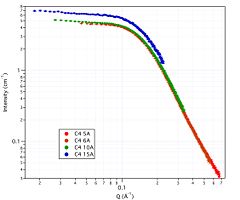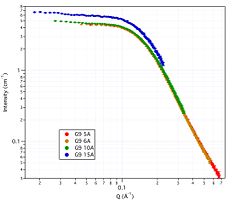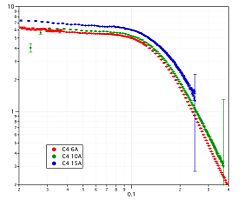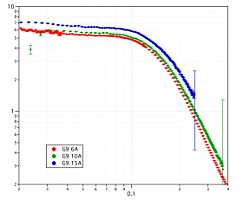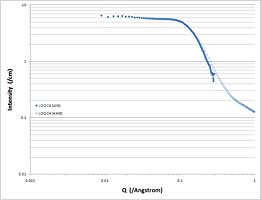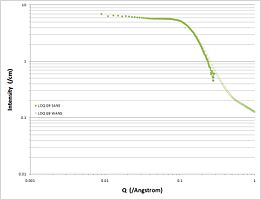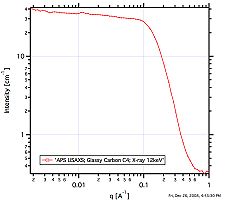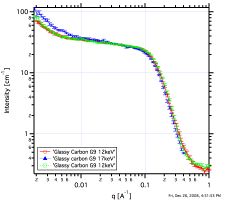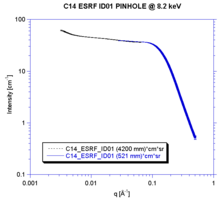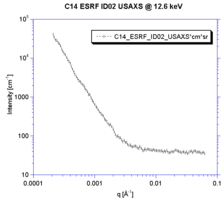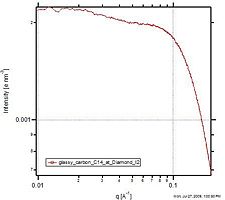Glassy Carbon Round Robin: Difference between revisions
(refer to the XML standard) |
(put contributed XML files into ZIP archives (since XSLT is not found when viewing XML from the wiki in a browser)) |
||
| Line 5: | Line 5: | ||
Contributors are encouraged to deposit their data using the | Contributors are encouraged to deposit their data using the | ||
[[cansas1d_documentation | cansas1d/1.0 XML data standard for 1-D SAS data]]. | [[cansas1d_documentation | cansas1d/1.0 XML data standard for 1-D SAS data]] within a ZIP or gzip archive file. Include the default XSLT stylesheet ([http://svn.smallangles.net/svn/canSAS/1dwg/trunk/cansasxml-html.xsl cansasxml-html.xsl]) in the archive and make sure that each XML file has a reference to that stylesheet in the file header: | ||
<pre> | |||
<?xml version="1.0"?> | |||
<?xml-stylesheet type="text/xsl" href="cansasxml-html.xsl" ?> | |||
<SASroot ... | |||
</pre> | |||
==Experimental details and Data== | ==Experimental details and Data== | ||
| Line 41: | Line 46: | ||
The collected data in canSAS XML format : [[Media:GLASSYC_C4G8G9.XML|GLASSYC_C4G8G9.XML]] and in pseudo canSAS XML (includes T vs Lambda datasets): [[Media:GLASSYC_C4G8G9_withTL.XML|GLASSYC_C4G8G9_withTL.XML]] | The collected data in canSAS XML format : [[Media:GLASSYC_C4G8G9.XML|GLASSYC_C4G8G9.XML]] and in pseudo canSAS XML (includes T vs Lambda datasets): [[Media:GLASSYC_C4G8G9_withTL.XML|GLASSYC_C4G8G9_withTL.XML]] | ||
Zip archive file with above XML files and standard stylesheet: [[Media:GLASSYC_C4G8G9.zip|GLASSYC_C4G8G9.zip]] | |||
Excel file of that data with plots : [[Media:Glassy_Carbons_C4_G8_G9.xls|Glassy_Carbons_C4_G8_G9.xls]] | Excel file of that data with plots : [[Media:Glassy_Carbons_C4_G8_G9.xls|Glassy_Carbons_C4_G8_G9.xls]] | ||
| Line 89: | Line 96: | ||
=== Diamond I22 === | === Diamond I22 === | ||
<Gallery caption="DLS I22 SAXS data for C14" widths="300px" heights="200px"> | <Gallery caption="DLS I22 SAXS data for C14" widths="300px" heights="200px"> | ||
| Line 96: | Line 101: | ||
</Gallery> | </Gallery> | ||
SAXS data, 8.9 keV, in canSAS XML format [[Media:gc14-dls-i22.xml|gc14-dls-i22.xml]] and ZIP archive [[Media:gc14-dls-i22.zip|gc14-dls-i22.zip]]. | |||
Revision as of 15:37, 26 August 2009
Samples
Two samples of glassy carbons (labeled C4 and G9) from Jan Ilavsky have made their way (as of Dec 1 2008) to NIST, ILL and ISIS and will head on to Diamond and APS. Additionally another sample, labeled G8, has been measured at ISIS.
The samples are cut from glassy carbon material, manufactured by Alpha Aesar under description: Glassy Carbon type 2. These samples are manufactured in 50 x 50 mm plates, nominally 1 mm thick. Measurements with a micrometer were all between 0.99 and 1.01 mm
Contributors are encouraged to deposit their data using the cansas1d/1.0 XML data standard for 1-D SAS data within a ZIP or gzip archive file. Include the default XSLT stylesheet (cansasxml-html.xsl) in the archive and make sure that each XML file has a reference to that stylesheet in the file header:
<?xml version="1.0"?> <?xml-stylesheet type="text/xsl" href="cansasxml-html.xsl" ?> <SASroot ...
Experimental details and Data
NIST
- NIST data for C4 and G9
Zip file of all data (in NIST 6 column format) with plots in PDF and Igor Pro formats GlassyCarbon_NIST.zip
Zip file of all data (in canSAS XML 1D format) GlassyCarbon_NIST_XML.zip
ILL
- ILL data for C4 and G9
Zip file of all data (in NIST 6 column format) with plots in PDF and Igor Pro formats GlassyCarbon_ILL.zip
Zip file of all data (in canSAS XML 1D format) GlassyCarbon_ILL_XML.zip
ISIS
- ISIS data for C4 and G9
The collected data in canSAS XML format : GLASSYC_C4G8G9.XML and in pseudo canSAS XML (includes T vs Lambda datasets): GLASSYC_C4G8G9_withTL.XML
Zip archive file with above XML files and standard stylesheet: GLASSYC_C4G8G9.zip
Excel file of that data with plots : Glassy_Carbons_C4_G8_G9.xls
APS USAXS
- APS data for C4 and G9
Zip file of all data (in ASCII 3 column format) with plots in PDF and Igor Pro formats GlassyCarbon_APS.zip
Zip file of all data (in canSAS XML 1D format) GlassyCarbon_APS_XML.zip
ESRF ID01 PINHOLE
The calibration sample measured on ID01 is designated "Glassy Carbon type 2 C, sample C14", thickness 1 mm.
The scattering intensity has been determined by cross calibration with a secondary standard ("lupolen BL4"). The scattering intensity of this sample decreases locally with the absorbed dose where irradiated. The unirradiated parts of this sample have identical scattering intensities that are higher than the scattering intensites of the irradiated parts. The calibration factor was found by scanning the secondary standard and using only an unirradiated part for calibration. Due to the uncertainties of the sample the accuracy of the absolute calibration is not assumed to be better than +-20%. The error bars indicate the statistical errors that are practically neglegible (typically 0.1% of the data values).
- ESRF ID01 PINHOLE data for C14
Zip file of all data (in ASCII 3 column format) GlassyCarbon_ESRF_ID01.zip
ESRF ID02 USAXS
The calibration sample measured on ID02 is designated "Glassy Carbon type 2 C, sample C14", thickness 1 mm. The scattering intensity has been calibrated with the USAXS camera relative to the primary beam without any cross calibration.
Remark: To increase the resolution at very low q-values a third crystal is mounted perpendicular to the scanning crystals. This reduces the sensitivity at higher q-values. Therefore only the range from qmin=0.0002*nm to qmax=0.06*nm has been measured.
- ESRF ID02 USAXS data for C14
Zip file of all data (in ASCII 3 column format) GlassyCarbon_ESRF_ID02.zip
Diamond I22
- DLS I22 SAXS data for C14
SAXS data, 8.9 keV, in canSAS XML format gc14-dls-i22.xml and ZIP archive gc14-dls-i22.zip.
